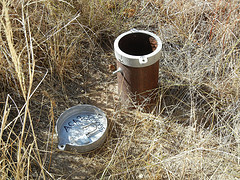Envision a cutting-edge structure, prefabricated and prepared for on-site assembly. You see that kind of construction technique only sometimes! Pre-engineered buildings, or PEB structures, are all the rage due to the rising demand for creative yet affordable construction! However, what are its benefits, and how can pre-structured be designed and built? Let’s find out!
A customized building can be an intriguing idea in a world where customization is essential to everything! Nevertheless, the method and schedule depart from conventional building practices. This article examines pre-engineered buildings and covers their design approach, uses, benefits, and drawbacks. Let us begin with a fundamental explanation of a PEB structure.
What is a PEB structure in the building industry?
Pre-engineered buildings, or PEBs, are constructed using a contemporary technique utilizing building components designed and prefabricated in a factory. These parts or components use bolted connections after being transported to the construction site. Additionally, these have a variety of uses, including commercial buildings, factories, and warehouses.
What are a PEB structure’s benefits and drawbacks?
Similar to any innovative concept, the PEB structure has pros and cons. The table below compares the two to help you better understand this concept.
Advantages
- PEB structures lower labor costs and material waste through consistent layouts and efficient manufacturing techniques, which reduces overall costs.
- Rapid on-site assembly can cut projects in half using standardized parts and advanced manufacturing techniques.
- PEB structures are known for their remarkable structural strength and ability to support large weights and seismic activity.
- PEB structures are a good value for long-term ownership because they require fewer repairs than traditional buildings.
- PEB structures use recyclable materials and reduce construction waste to promote environmental responsibility.
Disadvantages
- In contrast to traditional models, PEB structures have less customization because they evolved using standardized modules.
- Although PEB structures aim to be durable, exposure to harsh weather conditions and a lack of maintenance can shorten their lifespan.
- The limitations of the structural system may result in height restrictions for PEB structures.
- Due to their unique height restrictions, PEB structures might not be appropriate for large open areas or buildings with expansive columns.
- PEB structures may have fewer insulation options than conventional building techniques. It could reduce thermal comfort and offset the energy-saving advantage in colder climates.
Which are a PEB structure’s principal building blocks?
A pre-engineered building’s components consist of:
Primary frame
It acts as the framework for the PEB structure and includes stiff steel beams, rafters, and columns for structural support. These parts are often composed of premium steel to support large loads.
Auxiliary participants
Secondary members are details attached to the main frame to provide the walls and roof extra rigidity. These consist of girts, eaves struts, and purlins. Girts are affixed vertically to the walls, while purlins are positioned horizontally along the roof. Eave struts preserve the building’s structural integrity by joining the roof to the walls.
Wall and roof panels
To weatherproof a PEB structure, panels for the roof and walls are necessary. These panels are made from premium steel sheets and have multiple layers of protection to prevent corrosion. Because the panels come in various thicknesses, they are economical and efficient.
Add-ons
Besides enhancing their looks, PEB structures also come with various accessories. These may include doors, windows, ventilators, gutters, and downspouts. Gutter and downspout systems help avoid flooding, control rainfall and prevent logs from entering the building.
What are a few uses for PEB structures?
PEB structures are prevalent in a variety of sectors, including
- Industrial buildings include factories, warehouses, workshops, and storage facilities.
- Commercial structures include supermarkets, retail centers, office buildings, and showrooms.
- Institutional buildings include community centers, hospitals, colleges, and schools.
- Stadiums, exhibition halls, and sports complexes are examples of recreational buildings.
In short, pre-engineered buildings, or PEB structures, present a fresh perspective on the construction of buildings. Commercial builders can anticipate significant traction in their upcoming projects thanks to benefits like cost-effectiveness and quicker delivery schedules! When determining their practical application, suitability, and shelf life constraints.

